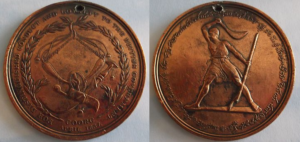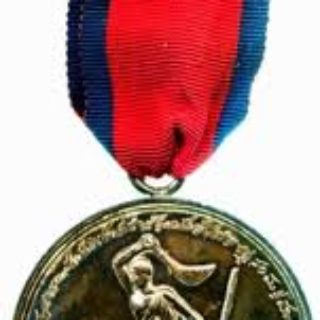
British Largesse: The Story of Coorg Gold Medallions
By: C.P. Belliappa
In 1837, three years after the British take-over of Coorg, there was a rebellion which is popularly known as ‘Amara Sulya da Katakai’.
The primary reason for this revolt by some of the peasants was their objection to the British collecting land tax in currency instead of in kind as was the practice during the reign of the rajas.
There was also a rather mysterious individual who proclaimed he was a descendent of the Haleri Rajas, and the rebellious peasants rallied round him.
The entire uprising was not well organized and there was a great deal of confusion. However, it soon spread right up to Mangalore where some of the British establishments were sacked. Encouraged by their success they were making a bid to attack Mercara.
The three years of British administration had brought peace in Coorg and a majority of the people did not want this disturbed. Compared to the misrule of Chikka Veerarajendra, there was equitable law and development in various fields. British enlisted the support of Coorgs to quell the rebellion. The two Dewans Apparanda Bopanna and Chepudira Ponnappa mustered the Coorgs and within days the rebellion was put down.
After this operation was completed a large amount of booty was collected from the rebels. The British offered this to the Coorgs for having helped them. To the surprise of the British, Coorgs rejected sharing the war booty.
Colonel Mark Cubbon was the Commissioner of Coorg, and Captain Le Hardy the Superintendent. It was Colonel Mark Cubbon who recommended to Governor-General Lord Auckland that the gallant Coorgs should be suitably recognized for their distinguished service. On Mark Cubbon’s recommendation the following awards were presented:
• Gold Medals with gold chains worth Rs.400 to the two dewans.
• 12 gold medals with chains worth Rs.200 to Subedhars and principal chiefs.
• 20 gold medals without chains for Parpatigars and others of equal rank.
• 10 gold medals worth Rs.50 for peasants who supported the British.
• 200 silver medals worth Rs.10 without chains for lower ranks and peasants.
All these medals were 2 inches in diameter. They were cast in the same moulding with a Coorg warrior on the obverse, and Trophy of Coorg arms on the reverse. Weight of these medals was adjusted by varying the thickness.
In addition, there were grants of land, Pegu ponies, fowling pieces (guns), shawls, clothes, turbans etc.
However, there was a 70-year-old Subedhar named Monnaiah (spelt Moonien by the British) who rejected all that the British offered. He was crestfallen because during the operation he lost his sword which was a gift from Dodda Veerarajendra. He wanted nothing but a replacement of the sword! Mark Cubbon immediately acted on this request and had a replacement sent to the Subedhar.
I wonder if this sword exists somewhere in one of the Coorg homes. Likewise, as far as I know, none of the Gold medallions are with any of the Coorg families. I remember my grandmother mentioning that when she came as a young bride to the Chepudira family she had seen the gold medal and chain presented to my ancestor Dewan Ponnappa.
Materials for this article are from a gazette notification published by the British in 1837. Mark Cubbon later became a Lt. General. He was very fond of Coorg and its people. It was at his insistence that Coorgs were exempted from the Disarmament Act.
(I have written about this episode in my book ‘Tale of a Tiger’s Tail and other yarns from Coorg’)
Recently there have been postings on FaceBook regarding sale of bronze Coorg Medals. The gazette notification does not mention bronze medals, but I guess they were presented to the foot soldiers.
I have one of these bronze medals, which was very kindly gifted to me by Mr. A. Franklin, an art collector in Bangalore. He is also the proud owner of the Bible which Queen Victoria presented to Princess Victoria Gowramma in 1852; photographs of which are in my book on Victoria Gowramma.


